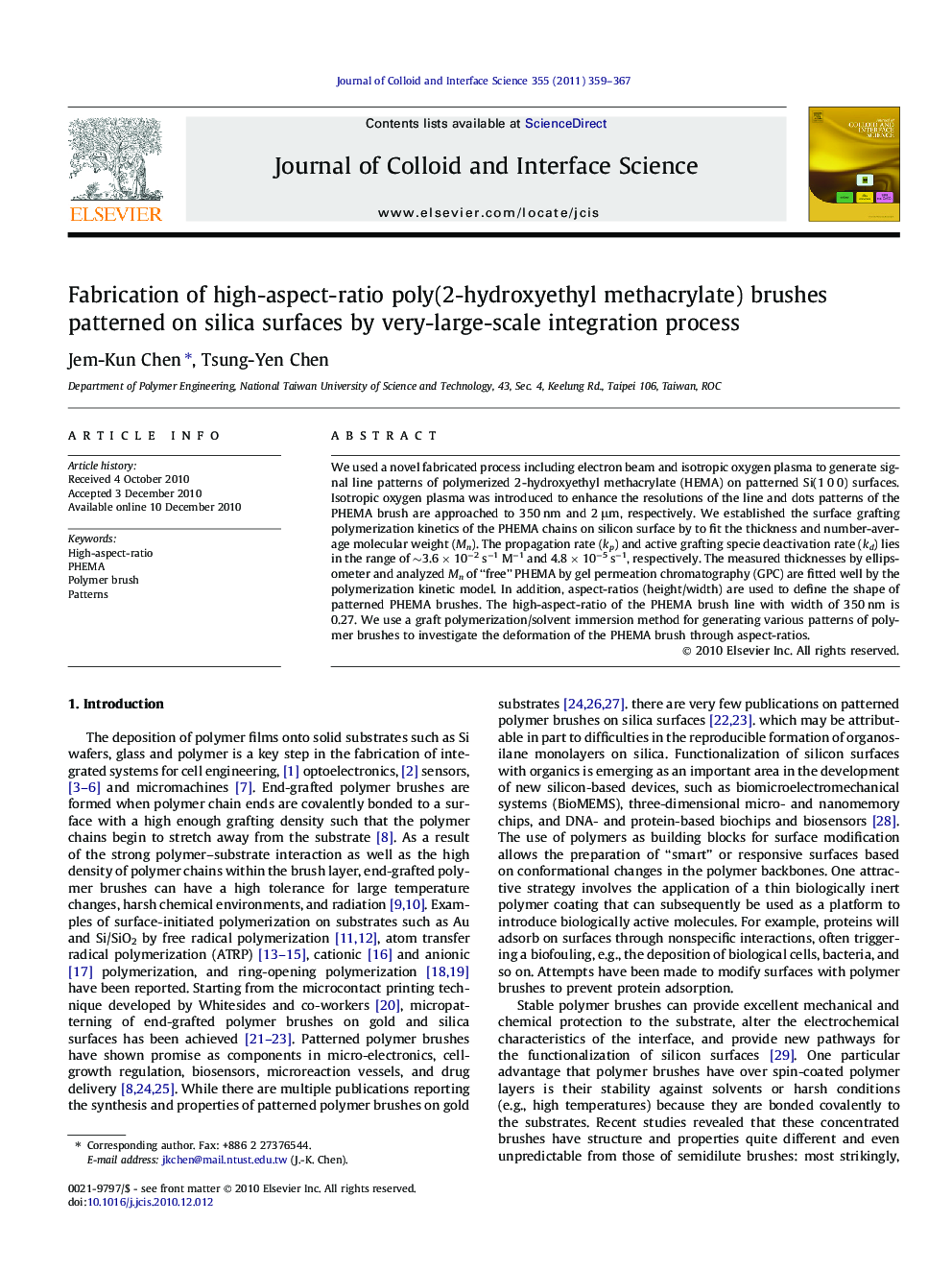| Article ID | Journal | Published Year | Pages | File Type |
|---|---|---|---|---|
| 609066 | Journal of Colloid and Interface Science | 2011 | 9 Pages |
We used a novel fabricated process including electron beam and isotropic oxygen plasma to generate signal line patterns of polymerized 2-hydroxyethyl methacrylate (HEMA) on patterned Si(1 0 0) surfaces. Isotropic oxygen plasma was introduced to enhance the resolutions of the line and dots patterns of the PHEMA brush are approached to 350 nm and 2 μm, respectively. We established the surface grafting polymerization kinetics of the PHEMA chains on silicon surface by to fit the thickness and number-average molecular weight (Mn). The propagation rate (kp) and active grafting specie deactivation rate (kd) lies in the range of ∼3.6 × 10−2 s−1 M−1 and 4.8 × 10−5 s−1, respectively. The measured thicknesses by ellipsometer and analyzed Mn of “free” PHEMA by gel permeation chromatography (GPC) are fitted well by the polymerization kinetic model. In addition, aspect-ratios (height/width) are used to define the shape of patterned PHEMA brushes. The high-aspect-ratio of the PHEMA brush line with width of 350 nm is 0.27. We use a graft polymerization/solvent immersion method for generating various patterns of polymer brushes to investigate the deformation of the PHEMA brush through aspect-ratios.
Graphical abstractA novel fabricated process including electron beam and isotropic oxygen plasma was used to generate signal line patterns of polymerized 2-hydroxyethyl methacrylate (HEMA) with 350 nm and 0.27 of resolution and high-aspect-ratio on patterned Si(1 0 0) surfaces, respectively.Figure optionsDownload full-size imageDownload high-quality image (76 K)Download as PowerPoint slideResearch highlights► With E-beam and isotropic oxygen plasma, generated a high aspect ratio of PHEMA brushes. ► The active grafting specie deactivation is quantitatively proved for ATRP system. ► Resolutions of the line patterns of the PHEMA brush are approached to 350 nm. ► Good and poor solvent immersion for the PHEMA brushes could greatly affect the aspect ratios.
